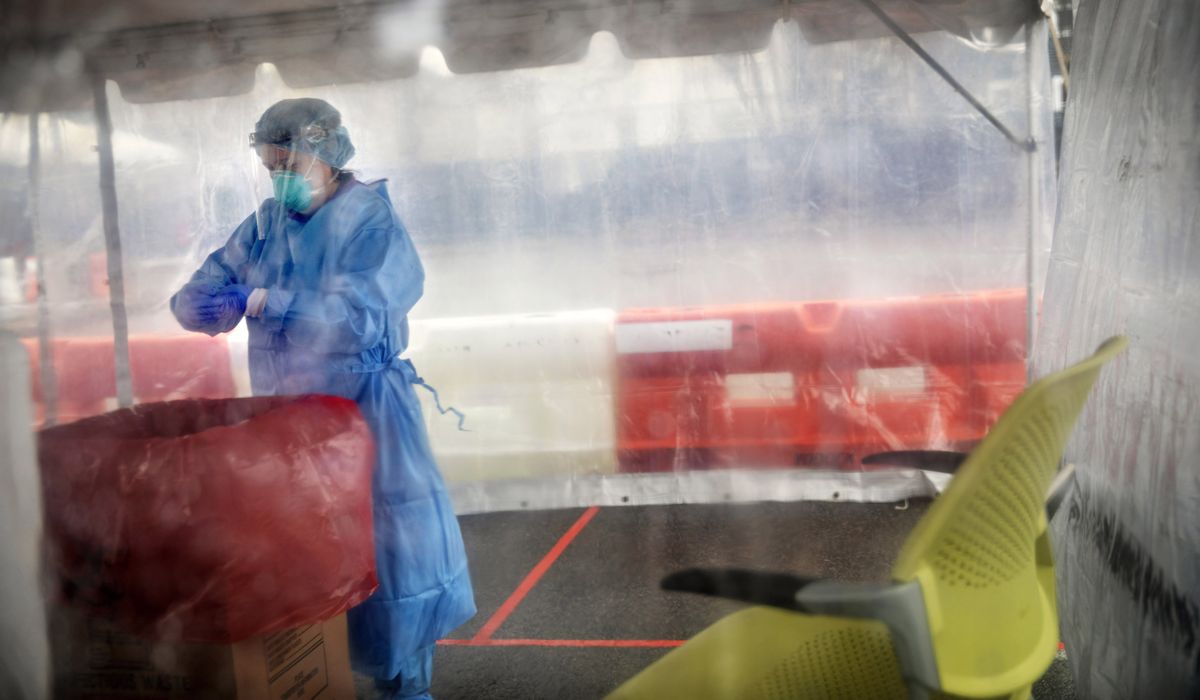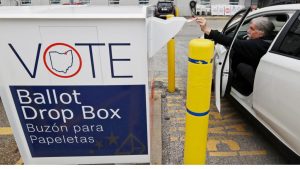The U.S. is “flattening the curve” of coronavirus transmission, but its case tally reached 1 million Tuesday and hot spots remain from New Mexico to Massachusetts, where the governor said high hospitalization rates have not dropped.
Gov. Charlie Baker, a Republican, said he is keeping nonessential businesses closed until at least May 18. He said Massachusetts has made progress in the battle against COVID-19 but the numbers aren’t where they need to be.
Iowa Gov. Kim Reynolds, a Republican, is allowing dozens of counties to begin reopening their economies, but the Sioux City area is waiting because its case count is growing at one of the fastest rates in the nation.
Widespread transmission at an Ohio jail, meanwhile, is fueling an outbreak north of Columbus. More than three-quarters of inmates at the Marion Correctional Institution, 1,950 in all, and more than 150 staff members have been infected, according to local reports, making it one of the largest hot spots in the nation.
Officials in Ohio said the high number of positive tests at the Marion jail is largely because of their widespread testing and that only 105 of the inmates were showing symptoms when they were checked.
In neighboring Pennsylvania, “we are continuing to look at much of the eastern part of the state as hot spots,” state Department of Health spokesman Nate Wardle said.
He said that includes Philadelphia and its surrounding counties and areas farther north, including counties along the New Jersey border and into the Pocono Mountains. The state is monitoring Hazleton as a city “of concern,” plus Allentown and Reading.
The hot spots underscore the lingering footprint of the COVID-19 crisis even as it shows signs of plateauing nationwide.
The U.S. recorded 22,000 and 27,000 new cases on Monday and Sunday, respectively, compared with well over 30,000 cases in each of the previous three days, according to a John Hopkins University tracker.
“Our experts believe the worst days of the pandemic are behind us,” President Trump said at a White House event on efforts to help small businesses.
Even so, the pathogen has infected more than 1 million people in the U.S. and may claim more lives than expected.
A closely watched model from the Institute for Health Metrics and Evaluation projects deaths from the current wave could reach more than 74,000, up from 67,600 estimated a week ago, because death rates aren’t falling quickly after states reach the peak of their epidemic curves.
As of Tuesday evening, more than 58,000 people had died in the U.S.
In western Massachusetts, Springfield is an emerging hot spot. The city has tallied more than 1,000 cases, with nursing homes and areas of dense housing fueling the spread, its mayor told 22News-WWLP.
Gallup, New Mexico, is emerging as a hot spot out West, according to a New York Times tracker, as members of the hard-hit Navajo Nation travel to the small city to shop and stay at campsites.
Rhode Island, meanwhile, has been caught between the hard-hit metropolises of New York City and Boston, with Providence as a hot spot.
Gov. Gina Raimondo, a Democrat, said new cases, hospitalizations and intensive care unit admissions have remained steady.
“Haven’t really seen much of a decline, which is what we’re aiming for,” she said.
Other states say they have beat expectations.
Gov. Ron DeSantis, a Republican, used a White House visit to boast that Florida had not become the hot spot that everyone thought it would be in March, when newscasters played reels of spring break revelers crowding the state’s beaches.
The governor faced criticism for refusing to issue a stay-at-home order until April 1, yet Florida’s hospitalizations and deaths per 100,000 aren’t as bad as the metrics in states with tougher restrictions.
“You go from D.C., Maryland, New Jersey, New York, Connecticut, Massachusetts, Michigan, Indiana, Ohio, Illinois, you name it — Florida’s done better,” said Mr. DeSantis, a key Trump ally. “And I’m not criticizing those states, but everyone in the media was saying Florida was going to be like New York or Italy, and that has not happened.
“Because we understood we have a big, diverse state. We understood the outbreak was not uniform throughout the state, and we had a tailored and measured approach that not only helped our numbers be way below what anyone predicted but also did less damage to our state going forward,” the governor said.
Likewise, California Gov. Gavin Newsom, a Democrat, said his state never saw a massive surge in key metrics like other hot spots across the country and around the globe.
“We’re still by no stretch of the imagination out of the woods there. It’s just stable. We’re not seeing substantial declines,” he said. “But again, Californians know we never experienced the big surge that other parts of the globe and certainly other parts of our country had.”
Mr. Newsom said California is likely “weeks, not months” away from making meaningful modifications to restrictions on some businesses.
He also said “learning loss” resulting from school closures might require some summer school.
“We are considering the prospect of an even earlier school year into the fall,” he said, “as early as late July, early August.”



















